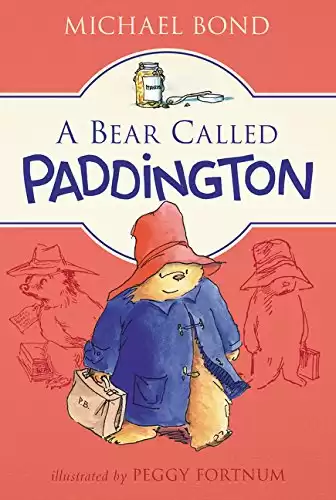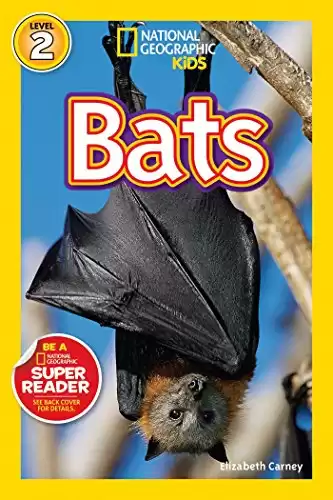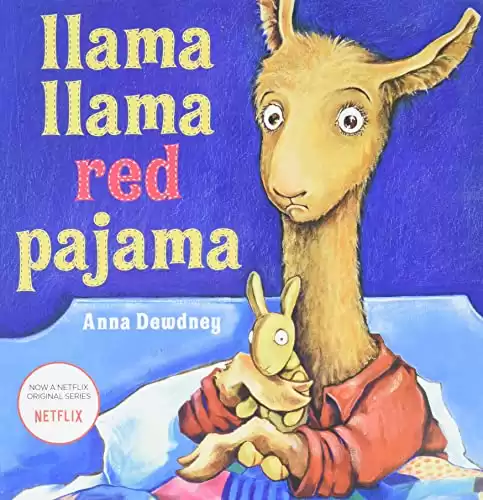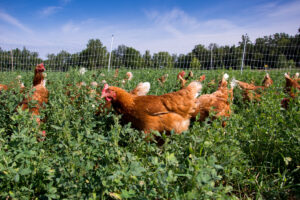It’s no surprise that animals, especially mammals, commonly feature in children’s literature. Cats, pigs, dogs, horses, elephants, bears, and tigers are among the creatures often represented in the stories. In fact, there is a seemingly endless supply of children’s books about mammals! But why is that the case?
Well, children tend to have an intense fascination with animals. In fact, we could write an entire book about the extraordinary bond between children and animals — but let’s leave that to developmental psychologists and ethologists.
The unique affinity that youngsters have with animals is undeniable. Animals come in all shapes and sizes, and each has unique characteristics and behaviors that are intriguing to explore. Moreover, evidence indicates that interacting with animals can help children develop social skills, self-esteem, and cognitive growth.
However, children are often drawn to mammals in particular because of their relatable characteristics. Many mammals have similar physical features and behaviors as humans, such as having a mother who nurses their young, playing and socializing with others, and having warm fur or skin that can be comforting to touch. Additionally, many mammals are friendly and approachable (like pet cats and dogs), which can make them appealing to children.
To continue the age-old tradition of reading animal books, here is our list of the best children’s books about mammals. You’re sure to find something that piques the interest of kids.
 Check Amazon
Check Amazon- An introductory text to the world of mammals
- Beautiful and realistic illustrations
- Perfect for preschoolers
 Check Amazon
Check Amazon- It is highly recommended for every young reader
- A favorite book of all ages
- A blend of humor and light sarcasm
 Check Amazon
Check Amazon- A great resource to teach kids about bats
- Attractive illustrations
- Aids vocabulary development
 Check Amazon
Check Amazon- An informative book to teach early readers about mammals
- Perfect for animal lovers
- Exposure to many other animals
 Check Amazon
Check Amazon- Perfect as a bedtime story
- Best enjoyed when read aloud
- Rhyming text and beautiful images
 Check Amazon
Check Amazon- A sweet, emotional story for kids and caregivers
- Beautifully illustrated
- A must-have for kids struggling with separation anxiety.
Top Picks: The Best Children’s Books About Mammals
1. About Mammals: A Guide for Children by Cathryn Sill (Author) and John Sill (Illustrator)
What do you get when a retired elementary school teacher writes about mammals? A simple, easy-to-read book that equips kids with fundamental introductory knowledge about the many diverse mammal species.
Readers will learn about various mammalian traits through the book’s simple text and stunning illustrations. Each page contains a stunning watercolor image of one of the featured animals along with a short blurb about that mammal. The images are absolutely stunning, with lots of color and plenty of realism. Even for children who can’t read, flipping through the pictures in this book can be an enjoyable experience.
The text itself is also very simple (a customer or two felt it was too simple). Some pages have a few sentences, while others only have a word or two, which is great for young children learning to read. In addition, the back of the book also contains a section with more information about each animal featured
About Mammals: A Guide for Children is one of the books in the About… series authored by Cathryn Sill and illustrated by her husband, wildlife artist John Sill. These books are best suited for beginners and introduce them to the natural world. About Mammals is a non-fictional book with 48 pages, which is an ideal quick read for three to seven-year-olds. It is available in paperback, hardcover, and on Kindle.
Pros and Cons of About Mammals: A Guide for Children by Cathryn Sill (Author) and John Sill (Illustrator)
| Pros | Cons |
|---|---|
| This is a great introduction to the world of mammals for young children. | One or two customers felt that the text was too simple. |
| It is simple and easy to read, with just a few sentences or even just a few words on each page. | |
| Each page features a stunning watercolor image of a different animal. | |
| Each image is accompanied by a short blurb about the animal in the image. | |
| This book is part of a larger series that the author and illustrator have created. | |
| It has 48 pages. | |
| It is available in paperback, hardcover, and on Kindle. | |
| This book is aimed at children three to seven years old. | |
| There is a section at the back of the book with more information about each animal featured. |
- An introductory text to the world of mammals
- Beautiful and realistic illustrations
- Perfect for preschoolers
2. A Bear Called Paddington by Michael Bond (Author) and Peggy Fortnum (Illustrator)
A Bear Called Paddington is a classic in every sense of the word. This 1958 publication was the first book in the Paddington Bear series and has remained a favorite of readers for generations. Paddington Bear has also been adapted for television, films, and adverts since it first aired on the BBC in 1966. Michael Bond (the author) was appointed an Officer of the Order of the British Empire (OBE) before his death in 2017 for his contributions to literature for children.
The book tells the enchanting story of Paddington, who arrives in London with a sign that says, “Please take care of this bear. Thank you.” The Brown family takes him in, and they have many wonderful adventures together. In A Bear Called Paddington, children can follow along with Paddington Bear and learn about famous spots in London like the theater, the Underground, the beach, and Portobello Market.
This book is aimed at children three to eight years old. It is a great book for children to read on their own if they are able, but it is also an excellent choice for reading aloud to younger children as well. You can read this book over a few days because it has 176 pages. It comes in hardcover, paperback, audiobook, and Kindle editions.
However, it is important to note that this book does not contain many illustrations. A few customers were disappointed that the images it did have were simple and uncolored.
Pros and Cons of A Bear Called Paddington by Michael Bond (Author) and Peggy Fortnum (Illustrator)
| Pros | Cons |
|---|---|
| This is the first book in a well-known children’s book series about Paddington Bear. | This book does not contain many illustrations. |
| Paddington Bear has also been adapted for television, films, and adverts since 1966. | A few customers were disappointed that the images it did have were simple and uncolored. |
| Children can follow along with Paddington Bear and learn about iconic places in London. | |
| This book is aimed at children three to eight years old. | |
| It is a great book for older children to read. | |
| It is also an excellent choice for reading aloud to younger children. | |
| This book has 176 pages. | |
| It is available in hardcover, paperback, audiobook, and Kindle editions. |
- It is highly recommended for every young reader
- A favorite book of all ages
- A blend of humor and light sarcasm
3. National Geographic Readers: Bats by Elizabeth Carney
Did you know that bats are the only flying mammal in the world? There are many more fascinating facts about bats to be discovered in this book by Elizabeth Carney. Carney won the 2005 AAAS Science Journalism Award for her coverage of science for kids. The book provides detailed descriptions of bats, their habitat, physical attributes, and the differences between bats and other mammals.
This book is from National Geographic Kids and is one of 41 science books for Level 2 readers. Young readers will enjoy this book because of the engaging subject, beautifully crafted content, excellent photographs, and extra learning activities included. It has 32 pages with library binding, paperback, and Kindle formats. It’s perfect for children aged five to seven.
However, a few customers reported that while the photographs transfer nicely in the Kindle format, the dictionary and translation features are disabled.
Pros and Cons of National Geographic Readers: Bats by Elizabeth Carney
| Pros | Cons |
|---|---|
| This is a great introduction to the fascinating world of bats. | A few customers reported the dictionary and translation features are disabled in the Kindle edition. |
| The author was awarded the AAAS Science Journalism Award for her coverage of science for kids. | |
| This book provides detailed descriptions of bats, their habitat, physical attributes, and the differences between bats and other mammals. | |
| It is published by National Geographic Kids. | |
| This book is for Level 2 readers or children ages five to seven. | |
| It includes an extra learning activity. | |
| This book has 32 pages with library binding, paperback, and Kindle formats. | |
| It contains engaging content and excellent photographs. |
- A great resource to teach kids about bats
- Attractive illustrations
- Aids vocabulary development
4. Is a Camel, a Mammal? by Tish Rabe (Author) and Jim Durk (Illustrator)
This fun children’s book about mammals is part of the Cat in the Hat’s Learning Library. In the book, Dick and Sally join The Cat in the Hat on a Dr. Seuss-inspired safari to see different mammals, such as shrews, cows, kangaroos, and anteaters.
The author uses well-known characters from Dr. Seuss’s Cat in the Hat books and rhyming text to illustrate facts about the various species of mammals. The illustrations are fun and whimsical. However, it is not written by Dr. Seuss, and a few customers felt it was a bit duller than his original works.
This book is 48 pages and is aimed at four to eight-year-olds. Kindle, paperback, and hardcover editions are all available.
Pros and Cons of Is a Camel, a Mammal? by Tish Rabe (Author) and Jim Durk (Illustrator)
| Pros | Cons |
|---|---|
| This is a fun, Dr. Seuss-inspired story that introduces children to many different mammals. | Although it is part of the Cat in the Hat’s Learning Library, this book was not written by Dr. Seuss. |
| It is part of the Cat in the Hat’s Learning Library. | A few customers felt it was a bit duller than the original works of Dr. Seuss. |
| The author uses well-known characters from Dr. Seuss’s Cat in the Hat books. | |
| The story is told in rhyme. | |
| The illustrations are fun and whimsical | |
| It is 48 pages. | |
| This book is aimed at four to eight-year-old children. | |
| It is available in Kindle, paperback, and hardcover editions. |
- An informative book to teach early readers about mammals
- Perfect for animal lovers
- Exposure to many other animals
5. Llama Llama Red Pajama by Anna Dewdney (Author and Illustrator)
This award-winning New York Times bestseller by Anna Dewdney is part of her famous Llama Llama children’s book series (arguably the most well-known books about llamas). Dewdney’s books have been adapted into musicals, theatrical plays, dance performances, and animated Netflix television series. They have also had multiple translations into German, Spanish, Chinese, Hebrew, Russian, and Italian.
Llama Llama Red Pajama tells a story about bedtime anxiety that many children can relate to. Dewdney uses a lot of alliteration and rhyming language throughout the story, making a stressful subject much lighter and easier for children to digest. However, a few customers did not like Baby Llama’s “tantrum” when he wasn’t getting what he wanted and felt it conveyed the wrong message.
This book has fun pictures that pair nicely with the rhyme and meter of the story as well. It is available as a board book, hardcover, audiobook, and Kindle.
Pros and Cons of Llama Llama Red Pajama by Anna Dewdney (Author and Illustrator)
| Pros | Cons |
|---|---|
| This book is a New York Times bestseller and has won several awards. | A few customers did not like Baby Llama’s “tantrum” when he wasn’t getting what he wanted and felt it conveyed the wrong message. |
| It is part of a larger series about llamas. | |
| The author’s Llama Llama series has been adapted for theater, musicals, dance, and an animated series. | |
| Many of the Llama Llama books have been translated into several different languages. | |
| The story deals with bedtime anxiety, which is something many children can relate to. | |
| It uses a lot of alliteration and rhyme to make the subject lighter and easier to digest for children. | |
| The book is filled with fun illustrations. | |
| It is available as a board book, hardcover, audiobook, and Kindle. |
- Perfect as a bedtime story
- Best enjoyed when read aloud
- Rhyming text and beautiful images
6. National Geographic Little Kids First Big Book of Animals by Catherine D. Hughes
Catherine Hughes is a regular contributor to the National Geographic Little Kids First Big Book series. In the usual style of the publishers, this book is an excellent resource for introducing children to the animal world. It contains fun text, a large typeface, and colorful images of 32 high-interest animals. Each of these animals gets a whole four pages devoted to them.
Some featured animals include cheetahs, tigers, wolves, camels, dolphins, penguins, and frogs. More than 150 of National Geographic’s finest animal images accompany the animal profiles. The book provides the kinds of information youngsters are interested in learning — the animal’s size, nutrition, habitat, and more.
This animal reference book is extensive, so kids can take their time reading it. It is aimed at children two to five years old. There are Kindle and hardcover versions available. However, some customers reported that while the content of the book was great, the physical quality of it was poor. Pages began to fall out within a few months of reading, and a few customers received books with missing pages, misordered pages, and even upside-down pages.
Pros and Cons of National Geographic Little Kids First Big Book of Animals by Catherine D. Hughes
| Pros | Cons |
|---|---|
| This book is part of the National Geographic Little Kids First Big Book series. | Some customers reported that while the content of the book was great, the physical quality of it was poor. Pages began to fall out within a few months of reading, and a few customers received books with missing pages, misordered pages, and even upside-down pages. |
| It is a great introduction to animals for children. | |
| The book’s text is fun with a large typeface. | |
| The pictures are colorful and high-quality. | |
| There are more than 150 images from National Geographic in this book. | |
| It teaches children about things like the size of the animal, what they eat, where they live, etc. | |
| This is an extensive reference book for young children, so they can take their time reading it. | |
| It is aimed at children two to five years old. | |
| There are Kindle and hardcover versions available. | |
| The book features 32 high-interest animals, each with four pages of information pages devoted to them. |
- It offers good value for money
- Child-friendly and informative
- Quality pictures
7. The Kissing Hand by Audrey Penn (Author) and Ruth Harper (Illustrator)
This book is a touching story of a young raccoon named Chester who is anxious to enter school and spend time away from his mother. However, Chester’s mother gives him a delicate kiss on his hand to console him and remind him that he has her love with him wherever he goes. In turn, the kiss also helps Chester’s mother feel comfort while he is away at school.
The Kissing Hand has been a beloved classic for children since its initial release in 1993. It’s no wonder it became a New York Times bestseller, and the American Library Association deems it a classic children’s book. This book was also honored with the Distinguished Achievement Award for Excellence in Educational Journalism. In addition, the National Education Association and School Library Journal named it one of the top 100 children’s picture books.
The story is told through simple text and detailed, heartwarming illustrations. This book is aimed at children from preschool through third grade and is 32 pages long. It also has stickers for children and their parents to use as well.
Pros and Cons of The Kissing Hand by Audrey Penn (Author) and Ruth Harper (Illustrator)
| Pros | Cons |
|---|---|
| This story is about a young raccoon heading off to school for the first time. | |
| It deals with separation anxiety and how to cope with it. | |
| The message is a great reminder for both parents and children. | |
| This book has won many awards and is considered one of the top children’s books classics available. | |
| The story is told through simple text and detailed, heartwarming illustrations. | |
| It is aimed at children from preschool through third grade. | |
| This book is 32 pages long. | |
| There are stickers at the back of the book. |
- A sweet, emotional story for kids and caregivers
- Beautifully illustrated
- A must-have for kids struggling with separation anxiety.
8. Who Would Win?: Fiercest Feuds by Jerry Pallotta (Author) and Rob Bolster (Illustrator)
Author Jerry Pallotta and illustrator Rob Bolster give readers a thrill with this action-packed animal series. This book actually is a five-for-one deal, containing five books from the Who Would Win? series. It includes some of the most dangerous animal duels. Who would win in a battle between a hyena and a honey badger? Or a Komodo dragon and a king cobra?
This book also teaches children about the behaviors and anatomy of each animal featured. In addition, it also includes several photographs and illustrations, as well as charts, diagrams, and other fun facts about the animals.
Published by Scholastic Inc. in September 2022, this book is perfect for children aged six to nine. Its 160 pages guarantee non-stop fun and learning. These books are easy to read but packed with engaging information and colorful images.
Pros and Cons of Who Would Win?: Fiercest Feuds by Jerry Pallotta (Author) and Rob Bolster (Illustrator)
| Pros | Cons |
|---|---|
| This book contains five books in one. | |
| It includes some of the most dangerous animal duels. | |
| This is a thrilling book with lots of action and powerful animal duels. | |
| This book also teaches children about the behaviors and anatomy of each animal featured. | |
| There are many photographs, illustrations, charts, diagrams, and other fun facts included. | |
| This book is aimed at children aged six to nine. | |
| It has 160 pages. | |
| This book is easy to read but is also packed with engaging information and colorful images. |
- An exciting read for animal lovers
- Highly engaging
- Interesting facts about animals
How to Choose the Best Children’s Books About Mammals
When it comes to choosing children’s books about mammals, it’s important to find selections that are not only educational but also engaging for your kids. A few important things to consider include:
- Illustrations
- Age-appropriate
- Fiction vs. non-fiction
Illustrations
Look for books that use vibrant and colorful illustrations or photographs that will help bring the mammals to life. A children’s book with great images can make the material so much more engaging and interesting for young readers. In addition, children are more likely to remember what they’ve read and learned when they can make a visual connection with the animal.
Age-Appropriate
Consider books that are age-appropriate for the child you’re shopping for, whether that means simple board books for younger children or more advanced picture books for older ones. Selecting age-appropriate books when looking for the best children’s books about mammals is crucial because it ensures the child’s understanding and engagement with the material. It’s important to keep in mind that younger children have shorter attention spans and limited vocabulary compared to older children. Children who are too young for a particular book might end up finding it too challenging, while older children will become bored with content that is too easy for them.
Fiction vs. Non-Fiction
When selecting the best children’s books about mammals, it’s essential to consider whether the book is fiction or non-fiction. Both types can be beneficial for children, but they each provide a different learning experience. Non-fiction books about mammals offer factual information that can help educate children about various species, their habitats, and their behaviors. These books can also help develop a child’s reading comprehension and research skills. Fiction books, on the other hand, provide a more creative experience for children. They can help develop a child’s imagination and introduce them to memorable mammal characters and stories.
The 8 Best Children’s Books About Mammals FAQs (Frequently Asked Questions)
Why should children read books about mammals?
Books about mammals are important for children because they teach them about the animal kingdom and the diversity within it. Exposure to books about mammals can also spark curiosity and inspire kids to learn more about the natural world around them.
What age group are these children's books about mammals aimed at?
The age groups for these children’s books about mammals can vary, but generally, they are aimed at children between the ages of four and ten. Many of the books have illustrations and simple language that will appeal to younger children, while the more in-depth books will be better suited for older children.
Are these children's books about mammals informative or are they just stories?
We’ve included a mix of both informative and fictional stories in our review. Some of the books provide scientific information about mammals, while others weave fictional stories about animal characters. Both types of books are designed to engage children and teach them about mammals in a fun and interesting way.
Thank you for reading! Have some feedback for us? Contact the AZ Animals editorial team.






